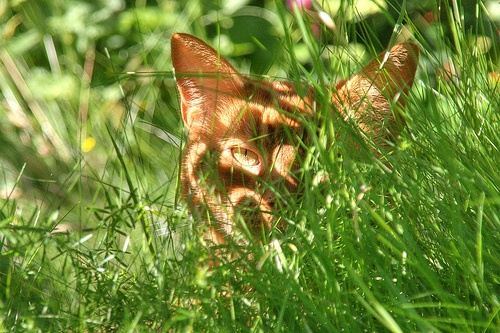Blog
Why Is My Cat Choking?
March 20, 2013

Well, it is spring again and our feline friends that go outside are faced with a surprising foe: ornamental grasses. These are a tricky foe because who'd ever think grass could be an issue for cats? Cats love to eat grass, no question about it. Many of us provide wheat grass for them to eat and they do fine with it. They will often vomit it, however it doesn't cause an issue. The question as to why cats would want to eat something that causes vomiting is up for debate, but it is what it is! Cats are not equipped to digest grass well and as such they eat it, it sits in their stomach, causes irritation, and then they vomit it. This is normal. Frustrating, but normal.
The problem arises when the grass/plant leaves have barbs/soft spine on them, as most ornamental grass do (indoor plants like spider plants also have these, so be careful here too!). These barbs cause an issue because as the cat vomits, these barbs will cause the grass to get stuck and cause irritation and choking. The most common location for the grass to lodge is behind the soft palate and nasal passage. The grass gets stuck there and usually dangles into the oral pharynx, where it tickles the throat. Thus, we see heavy swallowing, gagging, choking, vomiting, vomiting foam with or without grass, pawing at the mouth, sneezing, sneezing blood, and/or grass coming out of the nostril depending on where the grass is lodged.
Often the veterinarian can see the grass sitting behind the soft palate if they are able to get a good oral exam. Most cats dislike this and may require sedation. The cat will need to be sedated to remove the grass because of the barbs. Cats recover quickly from this and are usually back to normal within 24–48 hours. However, they are apt to do it again.
It is important to check all grass or grass-like house plants for barbs and keep away from your cat's reach, if the kitty likes to chew on plants. You can check by holding the leaf in your one hand and moving the grass between your thumb and index fingers in both directions, if it is sticking in one direction, it has barbs on it and could potentially cause this problem. The same can be done for outdoor plants, however it is much harder to limit a cat's exposure to all the potential grasses if he/she is a roamer. Many people who have experienced this issue more than once will remove the ornamental grasses from their yard or devise a fencing system to prevent access.



